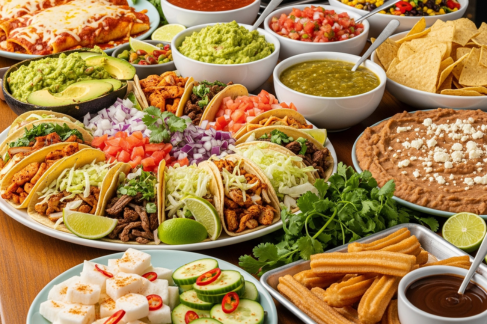Malt beverages are making a strong comeback, winning over both traditional drink lovers and health-conscious consumers. From rich, flavorful beers to nutrient-packed non-alcoholic options, they offer variety and versatility like never before. Yet, many people still overlook their potential because:
- They’re unsure what a malt beverage is.
- They associate malt only with beer and alcohol.
- They don’t know about the health and flavor benefits available.
This lack of awareness means many miss out on a delicious and functional drink choice. Here, we’ll dive into why malt beverages are gaining popularity in today’s markets and what’s fueling the trend.
1. A Diverse Range of Options for Every Taste
One reason malt beverages are making waves is their incredible variety. Traditionally, malt meant beer, but modern production has expanded the category to include:
- Alcoholic malt beverages like craft beers, flavored malt drinks, and malt liquors.
- Non-alcoholic malt beverages such as malt sodas, vitamin-enriched malt tonics, and sports recovery drinks.
This means whether you’re after a fruity party drink, a crisp lager, or a nutrient-packed post-workout option, there’s a malt beverage for you. This flexibility allows brands to reach multiple audiences—from casual drinkers to health-conscious consumers.
2. Nutritional and Functional Benefits
While the taste is a huge selling point, malt beverage benefits go beyond flavor. Many non-alcoholic varieties are naturally rich in B vitamins, which support energy and brain function. Some are fortified with minerals like iron, calcium, and magnesium for bone health and muscle support.
Other notable benefits include:
- Digestive support: The enzymes from the malting process can help with digestion.
- Natural energy boost: The natural sugars in malt make it a quick pick-me-up.
- Hydration and recovery: Especially in malt-based sports or coconut water blends.
With functional drinks on the rise, malt beverages fit neatly into the “better-for-you” beverage category.
3. Flavor Innovation Driving Curiosity
Gone are the days when malt beverages came in only a few flavors. Today, beverage developers are experimenting with tropical blends, berry infusions, citrus zests, and even botanical notes. Flavored malt beverages—sometimes referred to as alcopops—are gaining a loyal following among younger drinkers seeking bold, fun, and Instagram-worthy drinks.
Popular flavor directions include:
- Pineapple and coconut for a tropical vibe.
- Raspberry and blackberry for a tart-sweet balance.
- Lemon-lime for a crisp, refreshing kick.
This innovation is making malt beverages stand out against hard seltzers and traditional beers.
4. Perfect for Both Social and Solo Occasions
Another reason malt beverages are thriving is their social versatility. Flavored malt drinks are light, easy to sip, and pair well with a wide range of foods—from grilled meats to creamy desserts.
At the same time, non-alcoholic malt beverages are perfect for solo moments when you want a treat without alcohol—such as after a workout, during lunch, or while relaxing at home. This dual appeal widens the market reach significantly.
5. Health-Conscious Shifts in Consumer Habits
Modern consumers are increasingly mindful about what they drink. Sugary sodas are losing ground, and people are actively seeking functional, lower-sugar, or nutrient-rich alternatives. Non-alcoholic malt beverages meet these demands while still delivering a satisfying taste experience.
- Some brands are going further by using:
- Organic ingredients for a cleaner label.
- Sustainably sourced barley for eco-conscious buyers.
- Low-calorie formulas without sacrificing flavor.
This aligns with a broader movement toward better-for-you beverages in the market.
6. Global and Cultural Connection
Malt beverages have deep cultural roots. In Germany, beer brewed from malt is a centuries-old tradition. In parts of Africa and the Caribbean, sweet, non-alcoholic malt drinks are enjoyed as an energy booster or celebratory beverage. This cultural familiarity gives malt beverages a sense of authenticity and nostalgia—while modern versions introduce them to new audiences in fresh, exciting ways.
7. Support from Craft and Small-Batch Producers
The craft beverage movement has also fueled interest in malt drinks. Smaller producers are experimenting with local ingredients, seasonal flavors, and creative packaging. This artisanal approach appeals to consumers who want something unique and story-driven, rather than mass-produced.
It’s no surprise that flavored malt beverages and specialty non-alcoholic malt options are showing up in independent cafes, farmers’ markets, and boutique grocery stores.
8. Sustainability in Production
Sustainability is more than just a buzzword—it’s a purchasing factor for many consumers. Malt beverage producers are adopting eco-friendly practices such as water conservation, recyclable packaging, and energy-efficient brewing methods. This resonates with buyers who care about the environmental footprint of their food and drinks.
By marketing their green initiatives, malt beverage brands are winning over conscious consumers who might otherwise choose different categories.
Conclusion
Malt beverages are thriving because they blend tradition, innovation, and health-conscious appeal. With diverse options, bold flavors, and functional benefits, they cater to a wide range of tastes and lifestyles. As sustainability and wellness trends continue to shape the market, malt drinks are set to remain a refreshing favorite for both casual and mindful consumers.


